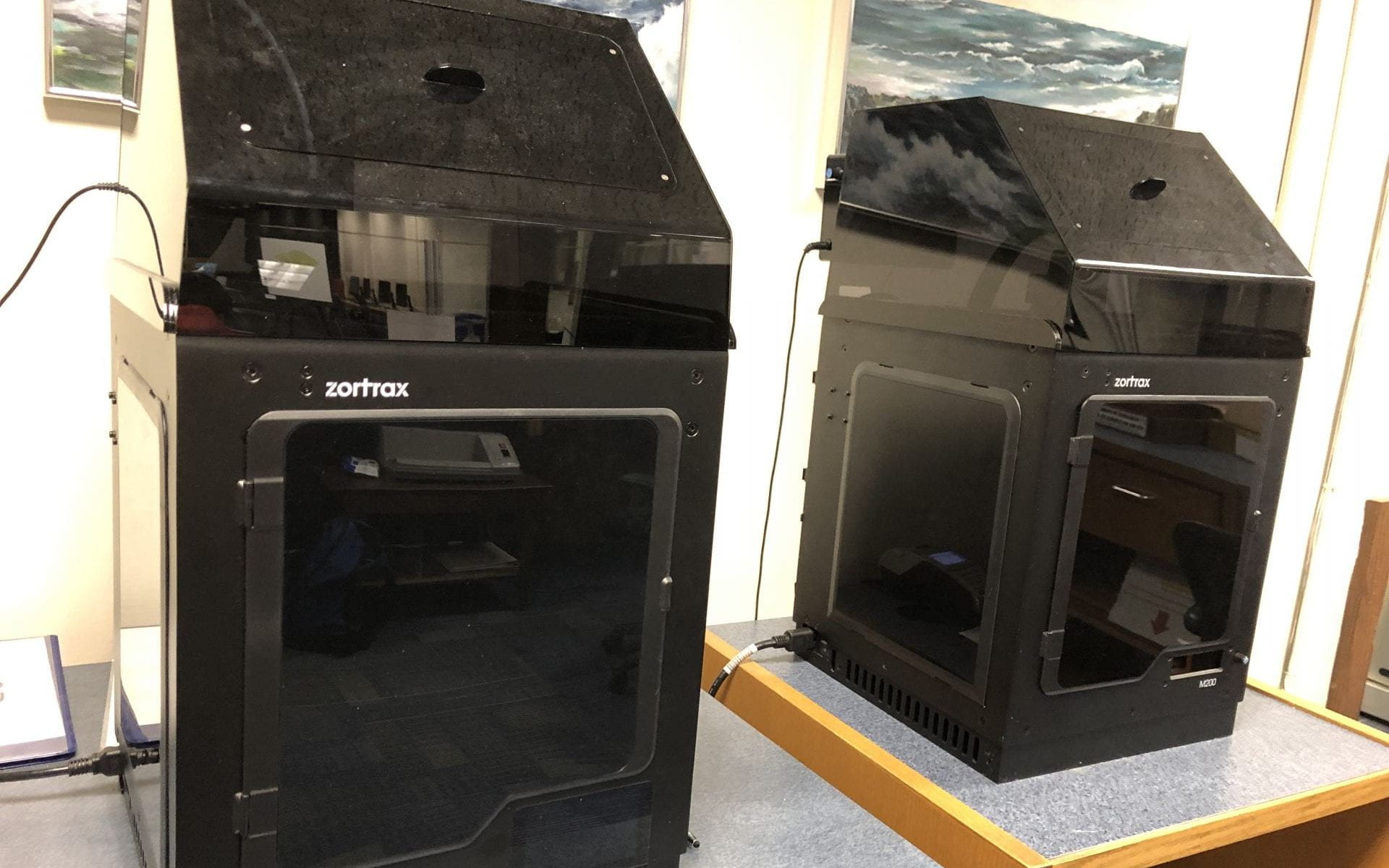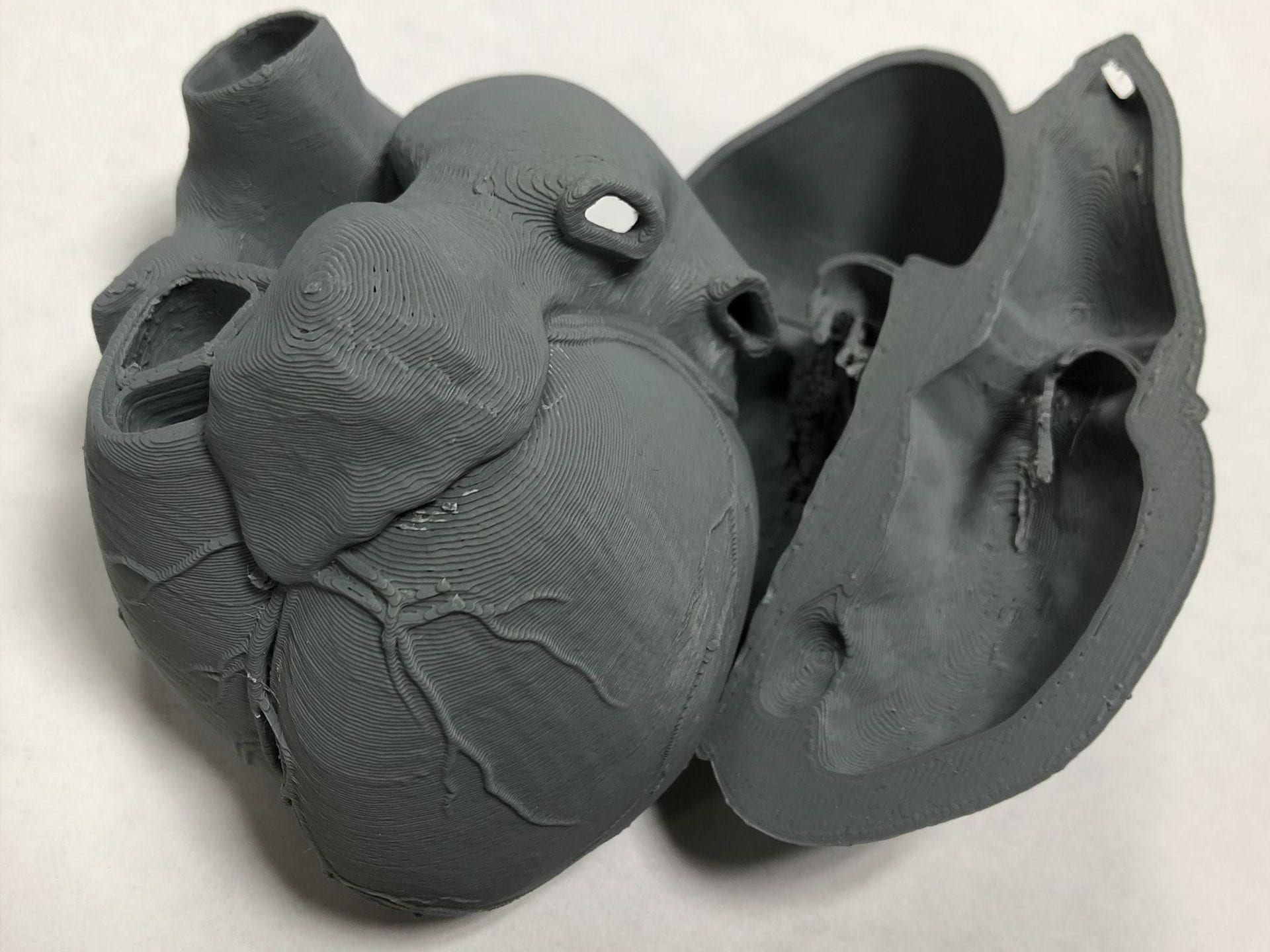
©Leland Ashford Lanquist, 2022
3D printing has received a considerable amount of spotlight in the past decade, but much of the focus lies upon its value for engineering, prototyping, and manufacturing. What can 3D printing offer the field of medical sciences, and what innovations have healthcare professionals already developed using 3D printers? Let’s explore some of the ways 3D printing is able to support or advance the field of medical sciences.
To start with, the customizability of 3D printing offers opportunities to create models that fit the needs of individual students and their courses. Scholars such as AbouHashem et al at Macquarie University and Western Sydney University have studied the effectiveness of using models in education, all at a more affordable price than traditional anatomical models (AbouHashem et al, 2015). But why is 3D printing so much more useful than other approaches to developing educational models? 3D printed models can be developed and printed to suit individual education needs–for instance, one student may want to focus on the internal structures of the heart, but another may need practice with the arteries and veins and how they connect to the rest of the vascular system.
Additionally, while traditional medical models often (for the sake of mass-production) show the body at the peak of health, 3D printed models offer opportunities for physically handling case-study examples. With tools like Harvard’s FreeSurfer, which can transform CT and MRI scans in the form of DICOM files into STL files–files readable by 3D modeling software like Blender3D and AutoDesk Maya–it is possible to create a 3D printable object based off of medical imaging after a bit of work cleaning it up.

©Leland Ashford Lanquist, 2022
Aside from educational models, hospitals and medical science institutions have been able to make high-detail models with tactile realism that can be used for surgical training and preparation. One method of 3D printing, known as Fused Deposition Modeling (FDM), extrudes a string of plastic material known as filament through a heated nozzle to meld the layers together one at a time. Advanced FDM printers can use multiple different nozzles to print different colors and materials. This has allowed some professionals such as Watanabe et al to develop models with flexibility and texture that better matches the human body (Watanabe et al, 2021). Weidert et al have elaborated upon how 3D printed models of bone fractures can be used to prepare surgeons for pre-planning complex procedures (Weidert et al, 2019).
Another popularized process is known as “bioprinting.” Bioprinting is a method of 3D printing with cells and other biomaterials to imitate natural tissue. It’s easy to imagine how this could be applied to medical sciences if the technology becomes advanced and accessible enough: as a replacement for organ donation, as a supplement for skin grafts, as a hyper-realistic training tool for surgery preparation. Much of this is not yet feasible on a large scale, but some are becoming more of a reality year by year. For instance, some researchers, such as Keriquel et al, have managed to complete in vivo bioprinting (i.e.: directly printing into the body) bone substitutes in mice with certain bone defects (Keriquel et al, 2017).
If you would like to learn more about bioprinting, Kenneth Douglas’ book, Bioprinting: To Make Ourselves Anew, explains how bioprinting came to be, as well as how it all works, in terms accessible to a generalized audience (Douglas, 2021). For a deep-dive into where bioprinting as a field might be headed in the future, you may be interested in reading Wei et al’s “The Bioprinting Roadmap,” which analyzes the successes, challenges, opportunities, and obstacles of bioprinting as of 2020 (Wei et al, 2020).
Some surgeons utilize 3D printing to develop customized implants and prosthetics for their patients. Since some of the more high-end 3D printers permit users to print objects made of metal alloys that are safe to be within the human body, healthcare professionals, such as Xu et al, have developed alloy-printed cervical spine reconstruction implants for Ewing’s sarcoma, a rare bone cancer found most commonly in adolescents.
You can learn more about 3D printed implants by reading Krishna et al’s “Muskuloskeletal 3D Printing” from Rybicki and Grant’s 3D Printing in Medicine. This chapter also includes information about how the customizability of 3D printed prosthetic limbs allows for things such as light-weight, low-cost, and functional prosthetic hands for children that can scale with the natural growth of the patient, (Rybicki & Grant, 2017) which were reported on in more detail by Zuniga et al. (Zuniga et al, 2015) You may also find Christensen’s chapter in 3D Printing in Medicine, “3D Printing and Patient-Matched Implants” a worthwhile read. It covers methods such as using 3D printed patient-scanned models as a form to shape metal implants around prior to surgery, as well as the use of implantable biomaterial, tying in methods of bioprinting previously elaborated upon. (Rybicki & Grant, 2017)
3D printing has not just made advances on a large scale, 3D printing is also on the forefront of innovation within micro-devices like lab-on-a-chip, micro-needles, and more. High-end 3D printers allow researchers and healthcare workers to produce complex micrometer-sized objects such as micro needles and lab-on-a-chip devices, customized to their particular needs.
In terms of the applications of these micro-devices, one scenario might be a researcher using a microelectrode array to gather and track high-quality data about how a person’s muscle cells and neurons react to certain electrical stimuli. This can help pharmacologists better understand how human bodies react to certain drugs. This same device can also be used in the development of a movable prosthetic limb that is custom to the person who uses that prosthesis.
Microneedles, on the other hand, are tools that allow healthcare professionals to deliver injectable materials into the skin in a way that is less painful and less frightening for patients with needle-phobia. They also produce less waste than their traditional needle counterparts. Researchers such as Kundu et al have published on the value of the production of these kinds of micro-devices in low-resource settings, even despite the high cost of the machines needed to produce them (Kundu et al, 2018). Other researchers such as Santana et al have discussed how micro-devices produced by 3D Printers might serve as a possible alternative to in vivo testing on animals in the future (Santana et al, 2020).
All of this is just a small slice of what 3D printing is capable of in the hands of healthcare professionals. As well, with 3D printing technology advancing, the sky is very swiftly becoming the limit of what is possible. From medical models to research devices, there is so much opportunity that comes with 3D printing for the field of health sciences.
Want to learn more about 3D printing and even get involved?
Himmelfarb Library offers 3D printing services! While we may not be able to produce every one of the items described in this piece, our 3D printing services do support a wide array of patron projects and activities, from educational models to cookie cutters. It is also a great way to get early involvement with what may very well become standard practice in many aspects of healthcare in the future, so please do come check out the service if you are a patron! If you’d like to learn more about how you can get involved, you can read more about how to request a print in a previous blog post, and you’re welcome to reach out to Leland Ashford Lanquist (lalanquist@gwu.edu) Brian McDonald (bmcdonald@gwu.edu) if you have any questions. If you already know what you want to do, go ahead and submit a print request, which you can also find on our 3D printing guide!
References
AbouHashem, Y., Dayal, M., Savanah, S., & Štrkalj, G. (2015) The application of 3D printing in anatomy education, Medical Education Online, 20(1), https://doi.org/10.3402/meo.v20.29847
Autodesk. (n.d.) Maya Software. Autodesk. https://www.autodesk.com/products/maya/overview
Blender Foundation. (n.d.) Home of the Blender project - Free and Open 3D Creation Software. Blender3D. https://www.blender.org/
Christensen. J. (2017). 3D Printing and Patient-Matched Implants. In F. J. Rybicki & G. T Grant (Eds.) 3D printing in medicine: a practical guide for medical professionals, (pp. 85-95). Springer International Publishing.
Douglas, K. (2021). Bioprinting: to make ourselves anew. Oxford University Press.
Harvard University. (n.d.) Freesurfer. https://surfer.nmr.mgh.harvard.edu/
Himmelfarb Health Sciences Library. (n.d.) 3D Printing at Himmelfarb. https://guides.himmelfarb.gwu.edu/3DPrinting/
Keriquel, V., Oliveira, H., Rémy, M., Ziane, S., Delmond, S., Rousseau, B., Rey, S., Catros, S., Amédée, V., Guillemot, F., & Fricain, J. (2017). In situ printing of mesenchymal stromal cells, by laser-assisted bioprinting, for in vivo bone regeneration applications. Scientific Reports, 7. https://doi.org/10.1038/s41598-017-01914-x
Krishna, S., Small, K., Maetani, T., Chepelev, L., Schwarz, B. A., & Sheikh, A. (2017). Musculoskeletal 3D Printing. In F. J. Rybicki & G. T Grant (Eds.) 3D printing in medicine: a practical guide for medical professionals, (pp. 71–84). Springer International Publishing.
Kundu, A., Ausaf, T., & Rajaraman, S. (2018) 3D Printing, Ink Casting and Micromachined Lamination (3D PICLμM): A Makerspace Approach to the Fabrication of Biological Microdevices, Micromachines, 9(2), https://doi.org/10.3390/mi9020085
Santana, H. S., Palma, M. S. A., Lopes, M. G. M.., Souza, J., Lima, G. A. S., Taranto, O. P., & Silva, J. L. (2020). Microfluidic Devices and 3D Printing for Synthesis and Screening of Drugs and Tissue Engineering. Industrial & engineering chemistry research, 59(9), 3794-3810. https://doi.org/10.1021/acs.iecr.9b03787
Watanabe, N., Yamamoto, Y., Fujimura, S., Kojima, A., Nakamura, A., Watanabe, K., Ishi, T., & Murayama, Y. (2021). Utility of multi-material three-dimensional print model in preoperative simulation for glioma surgery. Journal of Clinical Neuroscience, 93, 200–205. https://doi.org/10.1016/j.jocn.2021.09.017
Wei, S., Starly, B., Daly, A. C., Burdick, J. A., Groll, J., Skeldon, G., Shu, W., Sakai, Y., Shinohara, M., Nishikawa, M., Jang, J., Cho, D., Nie, M., Takeuchi, S., Ostrovidov, S., Khademhosseini, A., Kamm, R. D., Mironov, V., Moroni, L., Ozbolat, I. T. (2020). The bioprinting roadmap. Biofabrication, 12(2). https://doi.org/10.1088/1758-5090/ab5158
Weidert, S., Andress, S., Suero, E., Becker, C., Hartel, M., Behle, M., & Willy, C. (2019) 3D-Druck in der unfallchirurgischen Fort- und Weiterbildung: Möglichkeiten und Anwendungsbereiche, Der Unfallchirurg, 122(6), 444-451. https://doi.org/10.1007/s00113-019-0650-8
Xu, N., Wei, F., Liu, X., Jiang, L., Cai, H., Li, Z., Yu, M., Wu, F., & Liu, Z. (2016) Reconstruction of the Upper Cervical Spine Using a Personalized 3D-Printed Vertebral Body in an Adolescent With Ewing Sarcoma, Spine, 41(1), E50-E54. https://doi.org/10.1097/BRS.0000000000001179
Zuniga, J., Katsavelis, D., Peck, J., Stollberg, J., Petrykowski, M., Carson, A., & Fernandez, C. (2015) Cyborg beast: a low-cost 3d-printed prosthetic hand for children with upper-limb differences, BMC Research Notes, 8(1), 10-10. https://doi.org/110.1186/s13104-015-0971-9

